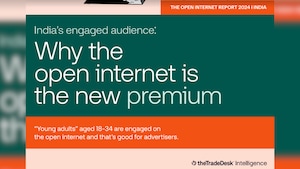As the world is becoming an increasingly digital age, voice assistants are reportedly playing an important role in our daily lives. From setting reminders to playing music, voice assistants are believed to be slowly taking on the roles of our own personal assistants. 93% of customers are satisfied with their voice assistants, according to a PwC report. As voice-activated technology continues to integrate itself into our daily routines, the advertising landscape is slowly evolving to take advantage of this change as well. From smart speakers to voice assistants, voice commands are proving to not only change the way we interact with technology but also the way brands interact with consumers. Voice-activated advertising, once a novel concept, now seems to be emerging as a digital marketing powerhouse by creating personalized and hands-free experiences for users. However, with ever-evolving digital platforms, voice-activated ads aren’t the only source of dissemination for brands, so what makes it different?
In basic terms, voice-activated ads work by using voice recognition technology to allow users to interact with advertisements through spoken commands. These ads are integrated into voice-activated devices and digital assistants, such as smart speakers and voice-enabled apps. In this scenario, when a user issues a voice command related to a product or service, the system recognizes the intent and delivers a targeted ad in response. For example, if a user asks his speaker for recommendations to buy a skin serum, the speaker will play an ad at the end of it, maybe with a voice command that the speaker recognizes and responds to in the way the brand wants. This technology enhances user engagement by providing a seamless, interactive advertising experience based on voice inputs.
Many industries are leveraging the convenience of voice-activated ads, setting the standard for mass adoption. “Using voice commands for rendering choices more convenient and tailored is a leading practice in the online and retail sectors,” said Siva Balakrishnan, CEO and founder, Vserve, BrandWagon Online. He also emphasized that online retail and e-commerce are at the forefront. Other sectors following suit are media and entertainment, he added. The auto industry is integrating these ads into smart car systems, enabling hands-free interactions for drivers, while healthcare is examining voice technology for medication reminders and communication -patient relationship. From what is understood, these industries are leading the way in using voice ads, setting the stage for wider adoption across multiple sectors.
“Financial sectors such as banking and insurance also use voice ads to offer promotions and facilitate hands-free searches for banking services such as checking account balances, applications credit card, payment, etc. Even the hospitality sector relies heavily on voice ads to offer services like room upgrades, spa reservations, dining reservations, etc,” said Delphin Varghese, co-founder and chief officer. of revenue, AdCounty Media.
Why are voice ads so appealing?
Ad spending on the global audio advertising market is estimated to reach $40.38 billion by 2024, according to Statista. It’s safe to say that the rise of voice-activated assistants such as Amazon Alexa, Google Assistant, and Apple’s Siri has caused a surge in the use of voice-activated ads. “The growing popularity of voice-activated assistants and smart speakers is the main reason for the increase in speech-activated ads,” says Balakrishnan. The ability to interact with technology in a personalized, hands-free way appeals to today’s fast-paced, convenience-driven consumers, he added.
However, like everything else, voice-activated ads also have their own set of challenges. Privacy and security are key barriers, as consumers remain wary of how their voice data is collected and used. “There may be a potential reluctance to engage with voice ads as consumers become suspicious of how their voice data is collected, stored and used for marketing efforts,” Varghese added. Furthermore, there are no concrete metrics and monetization strategies to measure the success and ROI of voice-based campaigns as it is still in its early stages, he added. The lack of a solid monetization model discourages many advertisers from investing in this sector.
“Voice ads often get higher engagement and recall ratings because of their conversational nature,” adds Balakrishnan. The interactive component of voice ads allows users to actively engage, making the experience more memorable. Studies indicate that voice ads can lead to higher recall rates compared to video, display, or audio ads. “Voice ads create a more intimate interaction with consumers, which improves recall,” Varghese said. Unlike passive formats like display or video ads, voice ads require active participation, leading to a more memorable and engaging user experience, he added.
The future perspective
From what is understood, the ROI (return on investment) for voice-activated ads looks promising, especially in sectors where convenience and immediacy drive consumer behavior. “Voice ads often result in higher conversion rates because of their interactive and personalized qualities,” Balakrishan noted. As technology advances, voice ads are expected to become an even more important tool for marketers looking for improved revenue.
However, the lack of standardized measurement tools poses a challenge. “While voice ads are great at engagement and conversion, this makes it difficult to assess their effectiveness compared to traditional ad formats like video and display with clearly defined metrics like impressions. clicks, views, impressions, etc.,” Varghese mentioned. This highlights the need for industry-wide standards to assess the performance of voice-activated advertising effectively.
Follow us on Twitter, Instagram, LinkedIn, Facebook
#voiceactivated #ads #future #digital #marketing #Brand #Wagon #News




